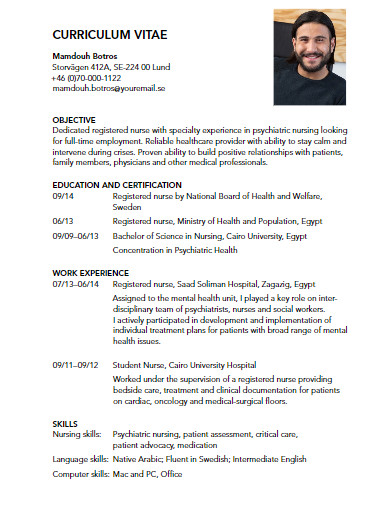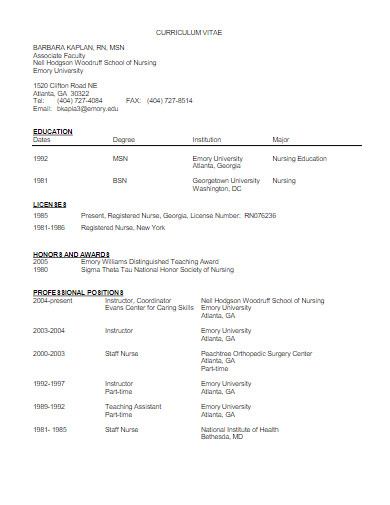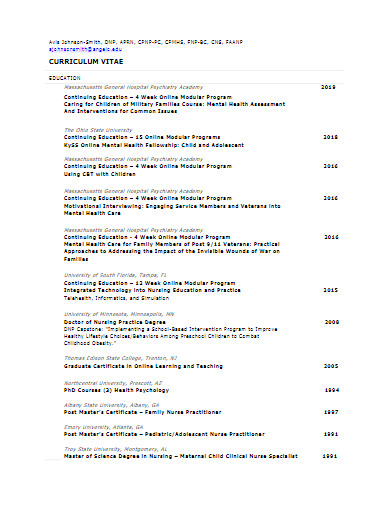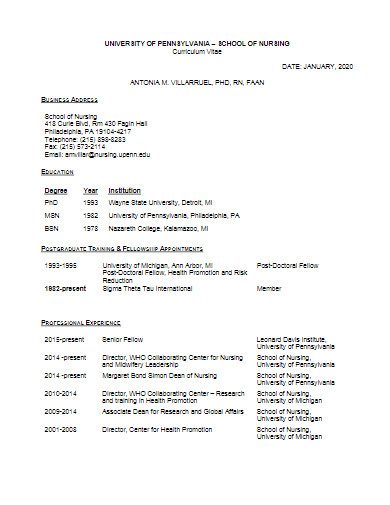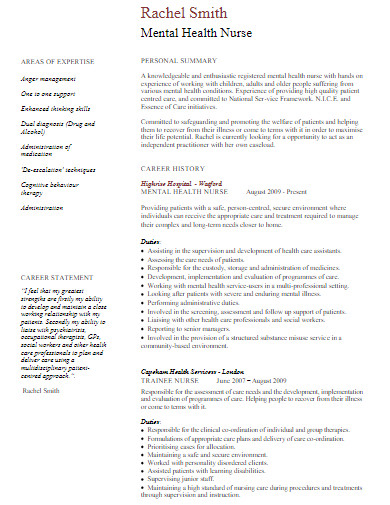10+ Nursing Curriculum Vitae Examples to Download
While most positions would need you to fill out an application form, it is also beneficial to build a curriculum vitae (CV) that you can use in your resume and send to potential employers or helpful contacts. When applying for positions in the private sector, there might not be a systematic application process. A strong CV is much more essential. CVs that are successful are rational, entertaining, and concise. As a result, make sure you tailor yours to the work you’re applying for and use appropriate keywords.
If you are a student nurse or newly qualified nurse, here are sample templates and tips that can help:
10+ Nursing Curriculum Vitae Examples
1. Nursing Curriculum Vitae
2. Student Nurse Curriculum Vitae
3. University Nursing Curriculum Vitae
4. Sample Nursing Curriculum Vitae
5. Nursing Curriculum Vitae Example
6. Basic Nursing Curriculum Vitae
7. School of Nursing Curriculum Vitae
8. Nursing Curriculum Vitae Template
9. Nursing Curriculum Vitae in PDF
10. Nursing Professor Curriculum Vitae
11. Mental Health Nurse Curriculum Vitae
What Is the Nursing Curriculum Vitae?
A nursing CV is a text that lists all of a nurse’s clinical achievements in a logical, chronological order. Although a resume is preferably limited to one page, a CV encourages you to expand on your professional accomplishments more thoroughly. And there is no requirement that the CV should be too brief.
When interviewing for a high-level job, a CV is necessary if the recruiting specialist wants to get a better picture of the applicants before holding interviews. If you apply with a CV, it serves as the initial point of interaction with the expert deciding on you, making it a vital part of the procedure.
How to Create a Nursing Curriculum Vitae?
When making your nursing CV, make sure you have all of the necessary details and format it correctly. The following are the steps to creating your nursing CV:
Step 1: Begin With the Basic Info
Include your basic contact details at the top of your CV, beginning with your name in a larger font, followed by your address, email, and phone number. Create a section titled “Professional Overview” under your contact details, and add a brief paragraph that includes a general summary of your position and qualifications. Use this room to showcase your best qualities and milestones. Also, indicated necessary details about your work, such as your length of experience.
Step 2: List Down Essential Skills
The following section should be titled “Skills.” It should demonstrate the core abilities important to your professional career. List each competence as part of a short statement that describes how you received or used it at work. This section does not need to be an exhaustive list of any technical experience you have. But must focus on the essential skills related to the job you’re applying for in a company.
Step 3: Organize Your Information
The sections that follow your skills may vary depending on the areas you are trying to highlight. Your professional career will determine which components are necessary to include. Here are some possible parts for your CV:
- Awards and honors
- Certifications
- Work experience
- Volunteer work
Step 4: Choose Your Template
Curriculum vitae can be longer than a resume, but you can format it to make it shorter. Even if you have all relevant skills and experiences, avoid using the abbreviated sentence structure in resumes to keep your CV concise. Maintain consistency with the verbs by using the same tense and pattern. Remember to use present tense verbs for positions you now apply and past tense verbs for positions you previously occupied.
FAQs:
What does CV mean in nursing?
Curriculum vitae, also known as a CV, means course of life. A CV is a more detailed description of one’s career experience than a resume. It is your opportunity to have a concise and thorough overview of your academic qualifications and experience. It is mainly used for people with master’s or doctoral degrees when applying for teaching or research positions at schools, universities, and scientific institutions as a recruiting tool.
What is the CV format?
Make a professional CV header format with your contact information. Separate your CV into legible parts such as Contact Information, Personal Statement, Work Experience, Education, Skills, and Additional Information. Part headings should be larger than the rest of the text. Don’t forget to add a blank line before and after each topic.
Why is a CV rejected?
One of the reasons CVs got dismissed is due to inaccurate dates to conceal mission jumping or unexplained work information. Education milestones have been expanded, including the purchase of pointless online degrees, salary increases, and job names.
Creating an accurate CV will take a long time, so it is your chance to show off your successes and talents to the boss. The more you learn about the work and the business, the more prepared you will be to make your CV stand out. Make use of the given CV tips and templates above.




